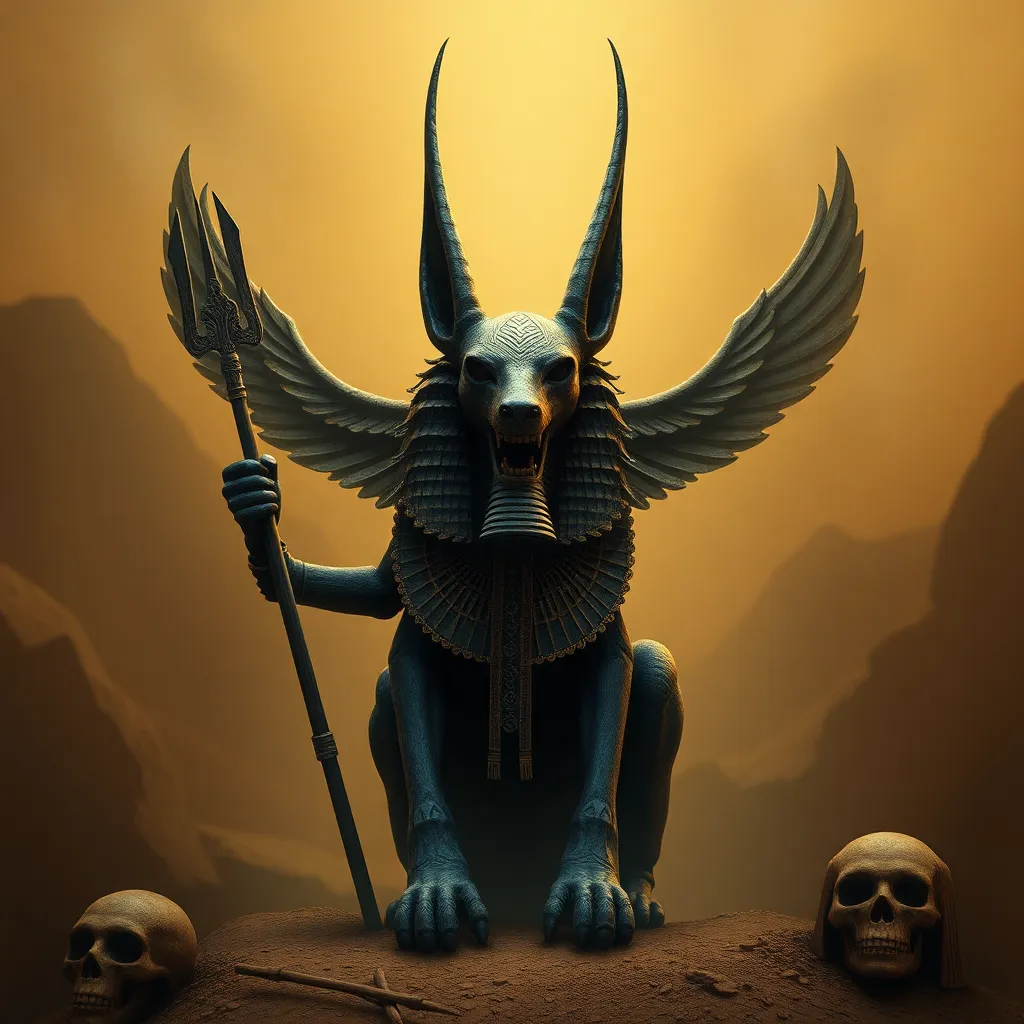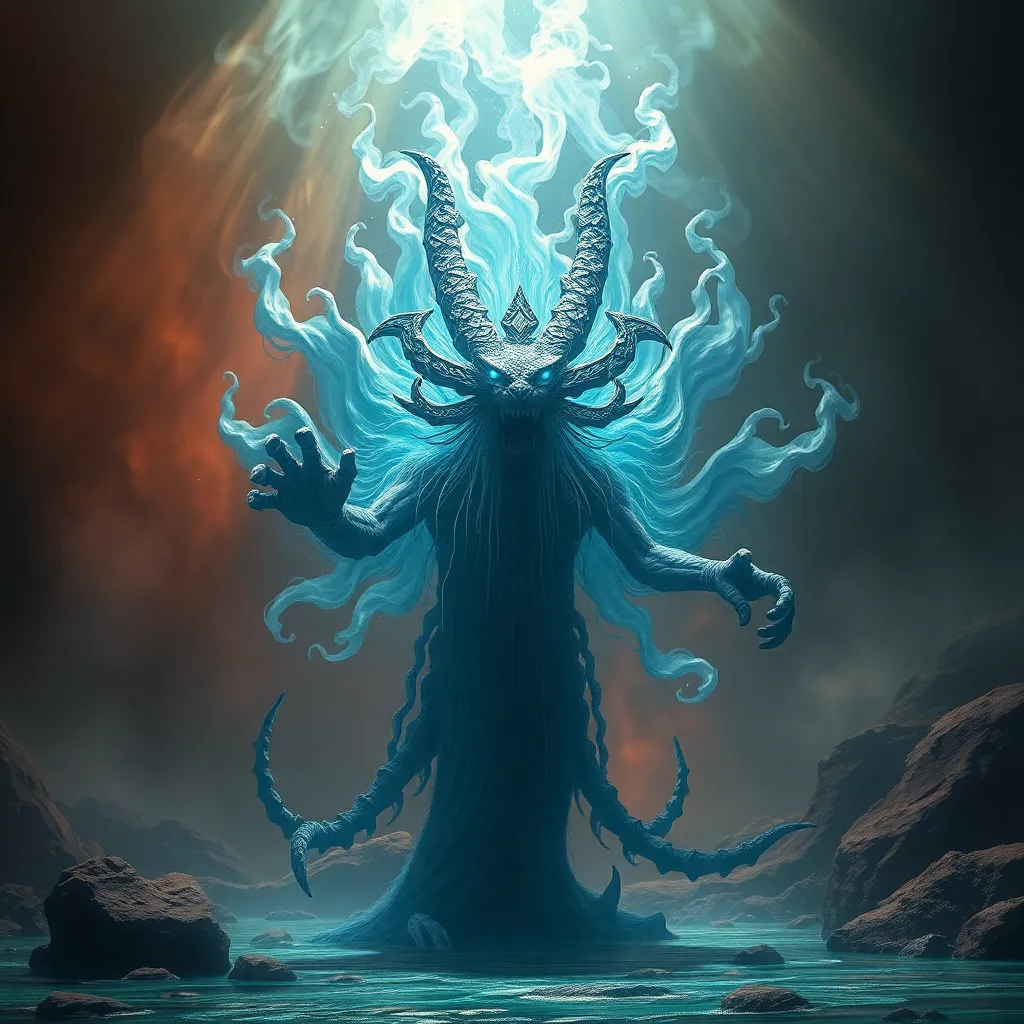Anubis: The God of the Dead in Ancient Egyptian Literature
I. Introduction
Anubis, one of the most recognizable deities in Ancient Egyptian mythology, embodies the complex beliefs surrounding death and the afterlife. Often depicted as a jackal or a man with a jackal’s head, Anubis was revered as the god who presided over funerary practices and the protection of the deceased. His significance lies not only in his role as a guide for souls but also in the broader context of Ancient Egyptian beliefs about life after death.
This article aims to explore the multifaceted nature of Anubis, examining his historical context, iconography, and enduring legacy. By delving into Ancient Egyptian literature and rituals associated with Anubis, we can gain insight into how this deity shaped cultural understandings of mortality and the afterlife.
II. Historical Context of Anubis
A. Origins of Anubis in Ancient Egyptian religion
Anubis’s origins can be traced back to the pre-dynastic period of Ancient Egypt, where he was initially associated with the burial of the dead. His connection to the jackal, an animal often found in cemeteries, likely contributed to his early associations with death and protection.
B. Evolution of his role from pre-dynastic to Greco-Roman periods
As Ancient Egyptian civilization evolved, so too did the role of Anubis. During the Old Kingdom, he became more prominently recognized as the god of mummification and the afterlife. In later periods, including the Greco-Roman era, his role became more integrated with other deities, most notably Osiris, the god of resurrection. This evolution reflects the changing religious landscape of Ancient Egypt, where gods often took on new attributes and responsibilities.
C. Comparison with other deities associated with death
Anubis is often compared to other deities associated with death, such as Osiris and Hathor. While Osiris is primarily viewed as the god of the afterlife and resurrection, Anubis serves as a protector and guide for the deceased. In contrast, Hathor is associated with rebirth and the nurturing aspects of life, illustrating the diverse roles various gods played in the pantheon surrounding death.
III. Iconography and Symbolism of Anubis
A. Description of Anubis’s physical appearance
Anubis is typically depicted as a man with a black jackal’s head, symbolizing his connection to the dead. The color black is significant, representing fertility and the rich soil of the Nile, as well as the darkness of the afterlife.
B. Symbolic meanings of the jackal and other attributes
- Jackal: Represents protection and vigilance over cemeteries.
- Black color: Symbolizes fertility, rebirth, and the mysteries of the afterlife.
- Funerary tools: Often depicted with tools related to mummification, emphasizing his role in the preservation of the dead.
C. Artistic representations in tombs and temples
Anubis was a common subject in tomb paintings and temple reliefs. These artistic representations often depicted him overseeing the mummification process or guiding souls through the afterlife. Such images served to reassure the deceased and their families that Anubis would protect them on their journey.
IV. Anubis in the Afterlife Journey
A. Role in the weighing of the heart ceremony
One of Anubis’s most crucial roles was in the weighing of the heart ceremony, which determined the fate of a soul in the afterlife. During this process, the heart of the deceased was weighed against the feather of Ma’at, the goddess of truth and justice. Anubis was responsible for ensuring the accuracy of the scales and guiding the soul through this critical judgment.
B. Guidance of souls to the afterlife
Anubis was also seen as a psychopomp, a guide for souls navigating the afterlife. He would escort the deceased through the Duat, the Egyptian underworld, ensuring they reached their final resting place safely. His protective nature provided comfort to the living, who sought his intervention on behalf of their loved ones.
C. Relationship with other deities in the afterlife
Anubis’s role in the afterlife is often intertwined with other deities, particularly Osiris. While Anubis prepares the dead and oversees the mummification process, Osiris takes on the role of king of the afterlife. Together, they exemplify the duality of death and resurrection, with Anubis as the protector and Osiris as the redeemer.
V. Anubis in Ancient Egyptian Texts
A. Key literary sources mentioning Anubis
Anubis is frequently mentioned in various Ancient Egyptian texts, including the Pyramid Texts and the Coffin Texts. These texts provide insights into his significance and the rituals associated with him.
B. Analysis of his portrayal in the “Book of the Dead”
In the “Book of the Dead,” Anubis is depicted as a crucial figure in the afterlife, guiding the deceased through the trials they face. His presence reassures the soul, emphasizing his protective role during the journey to the afterlife. The spells and prayers directed to him reveal the deep reverence the Ancient Egyptians held for this deity.
C. The significance of prayers and spells invoking Anubis
Prayers and spells invoking Anubis served to invoke his protection and guidance. These invocations were often included in burial rites and tomb inscriptions, ensuring that Anubis would look after the deceased in their journey beyond life.
VI. Cultural Impact and Legacy
A. Anubis’s influence on later civilizations and religions
Anubis’s influence extended beyond Ancient Egypt, impacting various cultures and religions that interacted with Egyptian society. His attributes and symbolism resonated with ideas of death and the afterlife in later belief systems.
B. Anubis in contemporary culture (film, literature, and art)
In modern times, Anubis has made appearances in various forms of popular culture, including:
- Film: Movies like “The Mummy” series feature Anubis as a significant character.
- Literature: Anubis appears in books that draw on Egyptian mythology, such as Rick Riordan’s “Kane Chronicles.”
- Art: Anubis continues to inspire artists, appearing in paintings and sculptures that reflect Ancient Egyptian themes.
C. The enduring fascination with Anubis in modern society
The fascination with Anubis endures in modern society, where he symbolizes the mysteries of death and the afterlife. His unique characteristics and rich mythology continue to captivate people, leading to ongoing interest in Ancient Egyptian culture.
VII. Rituals and Worship of Anubis
A. Practices and offerings dedicated to Anubis
The worship of Anubis included various practices, such as:
- Offering food and drink at funerals.
- Creating small figurines of Anubis to accompany the dead.
- Performing rituals that invoked his name during mummification.
B. Temples and sacred spaces associated with Anubis
Temples dedicated to Anubis were established in several regions of Egypt, particularly in areas associated with burial practices. These temples served as sites for rituals honoring Anubis and ensuring his protection over the deceased.
C. The role of priests and rituals in honoring Anubis
Priests played a vital role in the worship of Anubis, conducting rituals and offerings. Their duties included overseeing mummification processes and performing ceremonies that invoked Anubis’s protection for the souls of the deceased.
VIII. Conclusion
A. Summary of Anubis’s significance in Ancient Egyptian literature and culture
Anubis holds a central position in Ancient Egyptian literature and culture, representing the complex beliefs surrounding death and the afterlife. His protective nature and role as a guide for souls reflect the importance of these themes in Egyptian society.
B. Reflection on the ongoing relevance of Anubis in understanding death and the afterlife
The enduring legacy of Anubis invites reflection on how cultures



